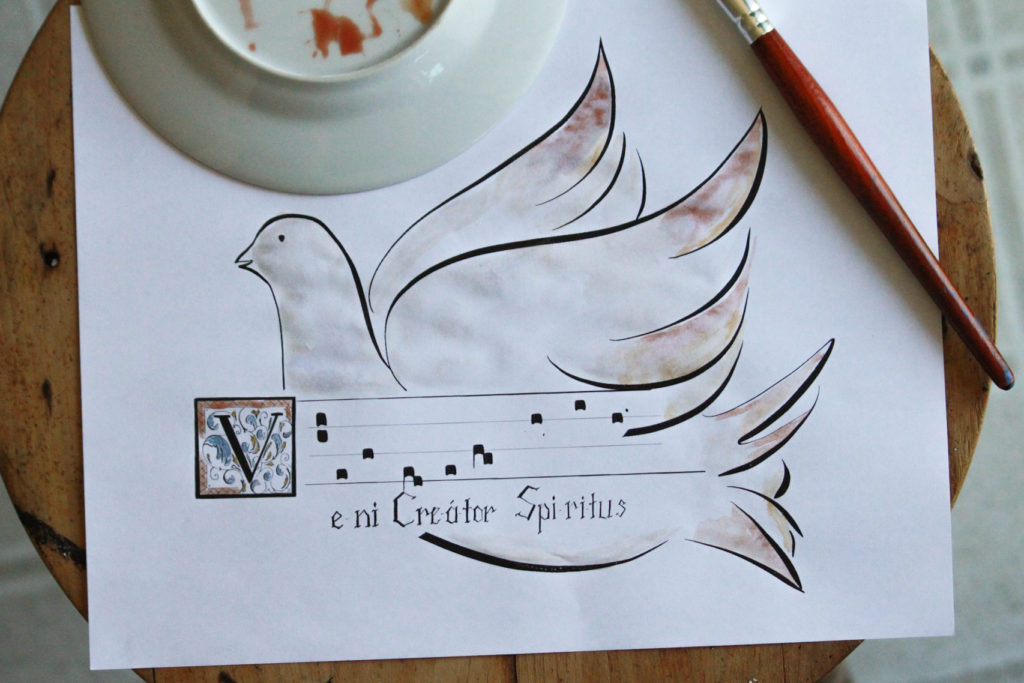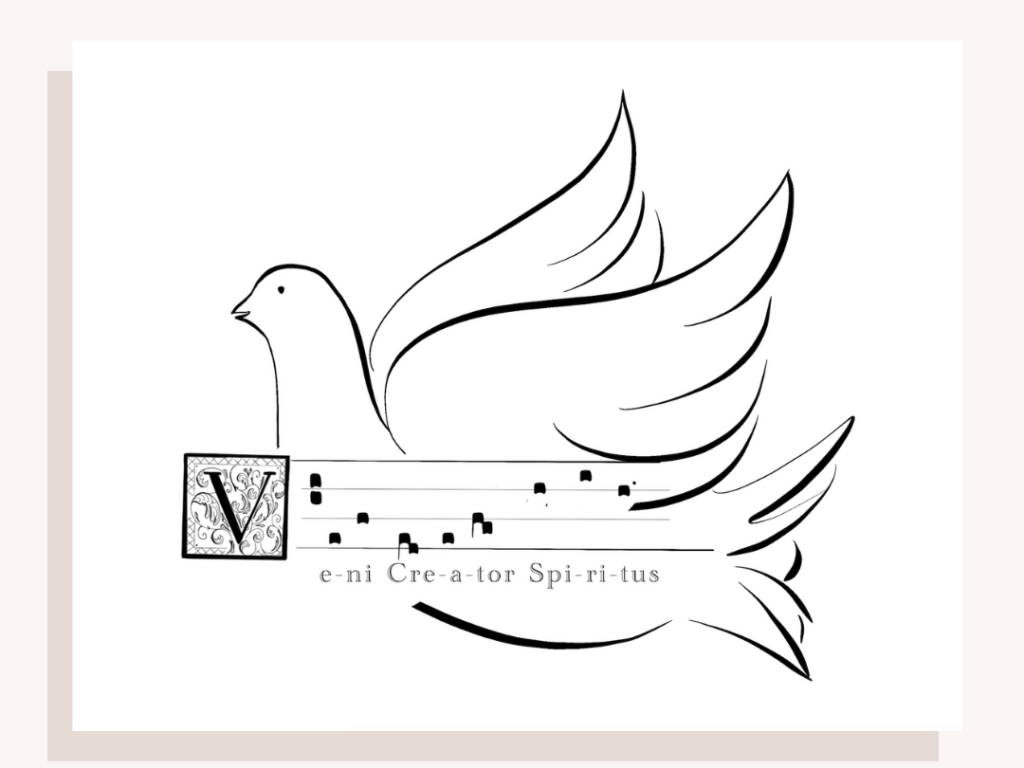
History
The Holy Spirit has long been associated with the dove. At Jesus’ baptism, for example, the Holy Spirit descended on him in the form of a dove. (Luke 3:22) But the symbolism goes even deeper. If you recall, the dove is also seen in one of the great baptismal narratives of the Old Testament: the flood. After the rains ceased, a great wind blew over the earth (like at Pentecost!), and Noah sent a dove in search of land. Furthermore, the dove is regarded as an animal of purity and was used as a Temple sacrifice in the Old Testament.
For this reason, the dove has found its way into many Pentecost traditions in the church and in the home. During medieval times, you might see a dove descend from the “Holy Spirit Hole” of the sanctuary on Pentecost during the sequence hymn, “Veni, Cretator Spiritus” (or as we know it from the LSB rendition, “Come, Holy Ghost, Creator Blessed”). As we mentioned in our Pentecost post, this would often be accompanied by loud instrumentation or the choir singing out their best rendition of what the rushing winds may have sounded like.
In the home, a dove would hang above the dining room table to remind the family of the Holy Spirit’s appearance on Pentecost. That is the historic activity that we would like to share with you today!
The Hanging Dove
Even today, many people fly a dove above their tables on Pentecost. In some homes, they assemble a wooden dove similar to a ship in a bottle—a dove in a bottle. While we don’t have that amount of skill, we do have a printable that can help you take part in this tradition with the Latin “Veni Creator Spiritus,” which we hope will inspire you to sing this and other great Pentecost hymns as it hangs above your table!

If you’re feeling extra creative, then we challenge you and any children you might have to create your own doves: put those drawing skills to the test! Or simply print off this one and color it to your heart’s content! We always love seeing what you use from the blog; it gives us so much encouragement. Feel free to share it with us using the hashtag #allthehousehold!

References:
1. Weiser, Francis X. Handbook of Christian Feasts and Customs: The Year of the Lord in Liturgy and Folklore. Harcourt, Brace & World, Inc. 1952.


One of my favorite memories is visiting the ruin of Crossraguel Abbey in Ayrshire, Scotland. We took advantage of being the only visitors that day and sang the Veni Creatus Spiritus in a stone chamber just off the nave. The sound was like no other I can remember–like being in heaven. But, of course, almost anything would have sounded beautiful with those acoustics!